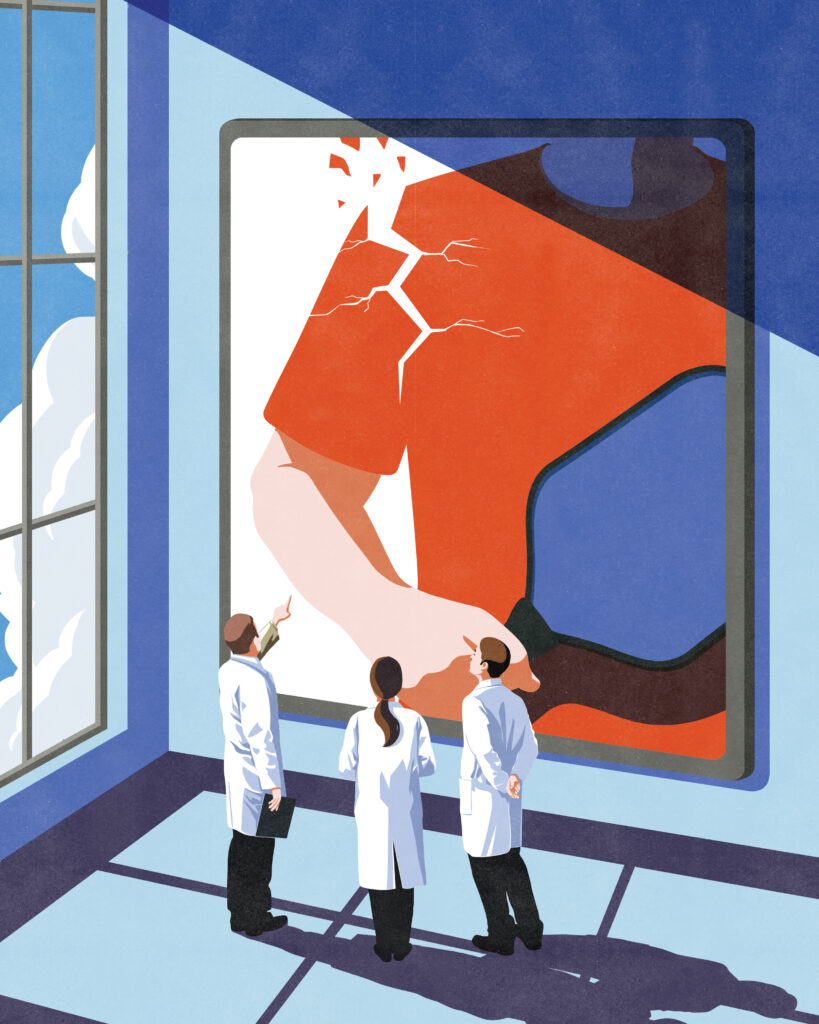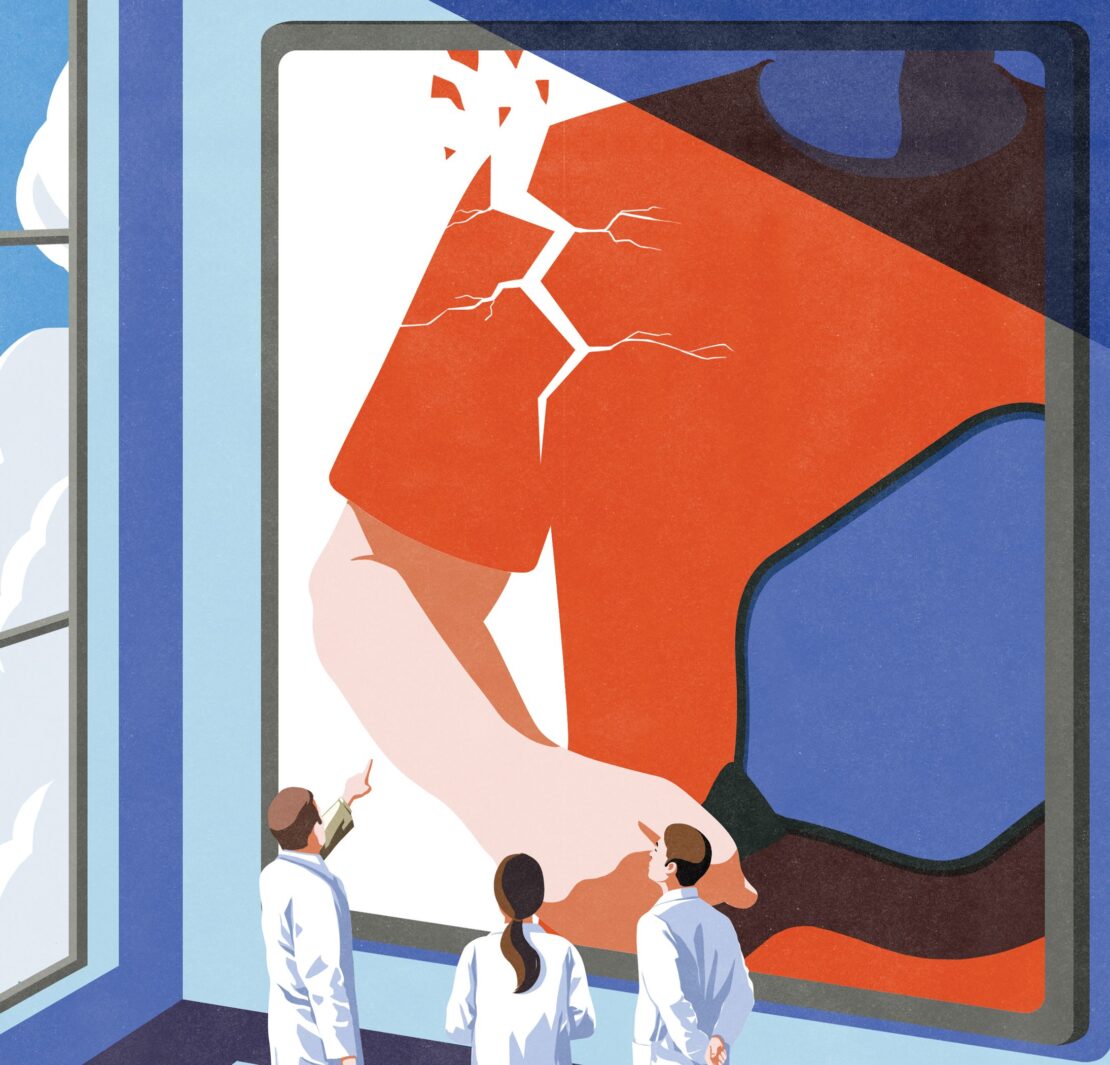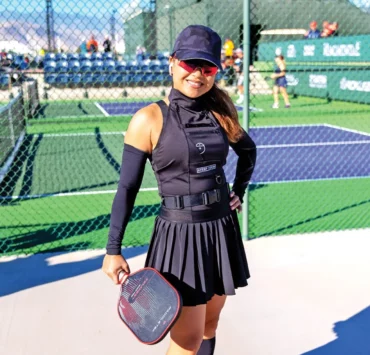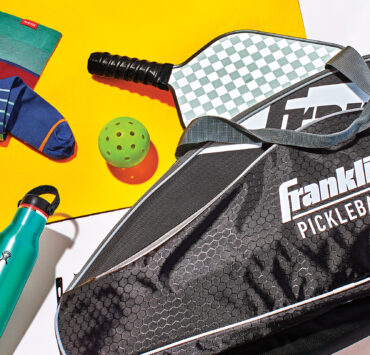
GARY A. PATTEE, M.D. is a Diplomate of the American Board of Orthopaedic Surgery, a Fellow of the American Academy of Orthopaedic Surgeons, and a motorcycle-racing enthusiast.
Shoulder pain is common in many sports, including pickleball, and the rotator cuff is often a source of this pain. So, what is the rotator cuff? The shoulder is composed of several joints and multiple ligaments, tendons, and muscles. The shoulder joint itself consists of a ball, the humeral head, and a socket, which is at the outer end of the shoulder blade. The rotator cuff comprises four tendons, which surround the ball and help to hold it in the socket; along with several muscles, it also moves the shoulder through a wide range of motion.
But the rotator cuff is under a great deal of stress during activities such as throwing, lifting overhead, and swinging a racket or paddle. When this stress is excessive and/or repetitive, the cuff may become irritated and inflamed (tendonitis). The bursa, a lubricating sac around the rotator cuff, can also become inflamed (bursitis). The result is pain around the shoulder and upper arm. Over time, the tendon fibers of the rotator cuff may begin to wear and fail, resulting in a tear.

Time away from the inciting activities often diminishes or resolves the pain. Icing the shoulder and taking occasional anti-inflammatory medications can help reduce symptoms, but recurrences are common when activities are resumed. If the problem persists or worsens, further evaluation is advised to check for the underlying cause of the pain, including a tear in the rotator cuff. Most tears are not due to a specific injury but occur gradually over time and with age.
After taking a thorough history and performing a focused physical examination, your physician may order imaging studies. Although X-rays won’t show a rotator cuff tear, they can help rule out other problems, such as arthritis, calcium deposits, and fractures. MRIs and ultrasonography are used to image the soft tissues around the shoulder and can detect rotator cuff tears, tendonitis, and bursitis.
What happens if you have a tear in your rotator cuff? Since a significant number of people have rotator cuff tears without symptoms, the presence of a tear on an imaging study does not prove that it is the cause of the pain. A selective local anesthetic injection into the bursa can be helpful in making a diagnosis.
Temporary pain relief after the injection is evidence that the rotator cuff is likely contributing to the pain. Adding a corticosteroid with the injection can reduce inflammation and may improve the symptoms but will not heal a tear. Also, steroid injections should not be done frequently as they can lead to breakdown of tissue and cause further problems.
Conditioning and stretching the shoulder muscles, along with postural strengthening to stabilize the shoulder blade against the chest wall, can reduce the symptoms of a rotator cuff tear. A course of physical therapy is helpful in getting started, with instruction to continue a home exercise program. Some rotator cuff tears worsen over time with ongoing pain, weakness, and loss of shoulder motion. In that case, surgery may be indicated to repair the tear. This is usually done as an outpatient procedure, with small incisions using arthroscopic techniques. A physical therapist is often involved in helping to regain motion and strength following surgery. However, recovery takes considerable time, and returning to previous sports activities can take four to six months.
General conditioning and strengthening, maintaining flexibility, warming up prior to playing, and not pushing through the early onset of pain are important steps in pursuing many years of pickleball while lowering the risks of developing serious rotator cuff issues.



